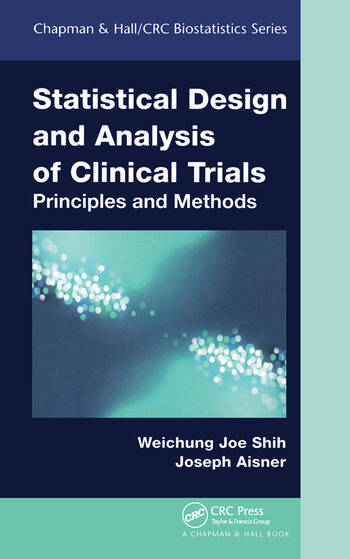 Features
Features- Covers the material in a logical progression from design concepts and sample size calculation to analytical methods to trial monitoring with sequential designs, interim analyses, and adaptive midcourse modification to the ubiquitous problem of missing data
- Incorporates many examples of trials published in medical journals and from the authors’ consulting projects
- Introduces simple commands for some techniques using R functions or SAS procedures, enabling students to carry out straightforward computer simulations
- Includes homework assignments and in-class exercises that are suitable for students from different disciplinary backgrounds, such as biostatistics, epidemiology, and pharmacy
Figure slides are available upon qualifying course adoption.
SummaryStatistical Design and Analysis of Clinical Trials: Principles and Methodsconcentrates on the biostatistics component of clinical trials. Developed from the authors’ courses taught to public health and medical students, residents, and fellows during the past 15 years, the text shows how biostatistics in clinical trials is an integration of many fundamental scientific principles and statistical methods.
Teach Your Students How to Design, Monitor, and Analyze Clinical Trials
The book begins with ethical and safety principles, core trial design concepts, the principles and methods of sample size and power calculation, and analysis of covariance and stratified analysis. It then focuses on sequential designs and methods for two-stage Phase II cancer trials to Phase III group sequential trials, covering monitoring safety, futility, and efficacy. The authors also discuss the development of sample size reestimation and adaptive group sequential procedures, explain the concept of different missing data processes, and describe how to analyze incomplete data by proper multiple imputations.
Turn Your Students into Better Clinical Trial Investigators
This text reflects the academic research, commercial development, and public health aspects of clinical trials. It gives students a multidisciplinary understanding of the concepts and techniques involved in designing and analyzing various types of trials. The book’s balanced set of homework assignments and in-class exercises are appropriate for students in (bio)statistics, epidemiology, medicine, pharmacy, and public health.

 扫码加好友,拉您进群
扫码加好友,拉您进群